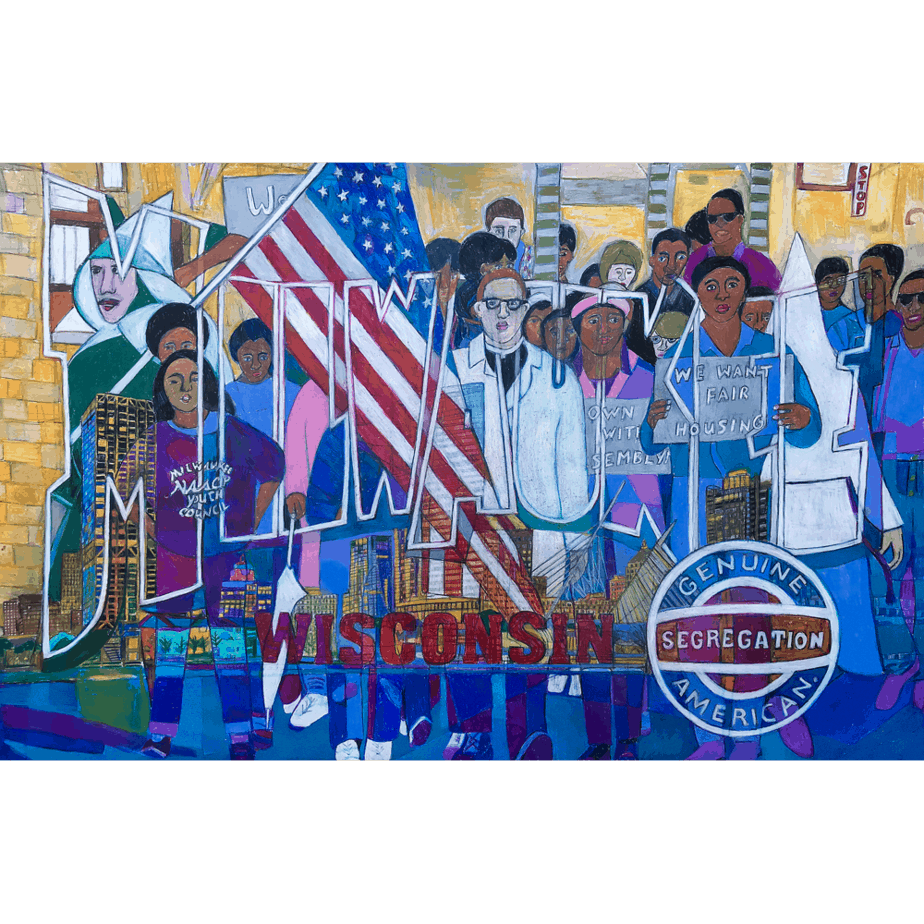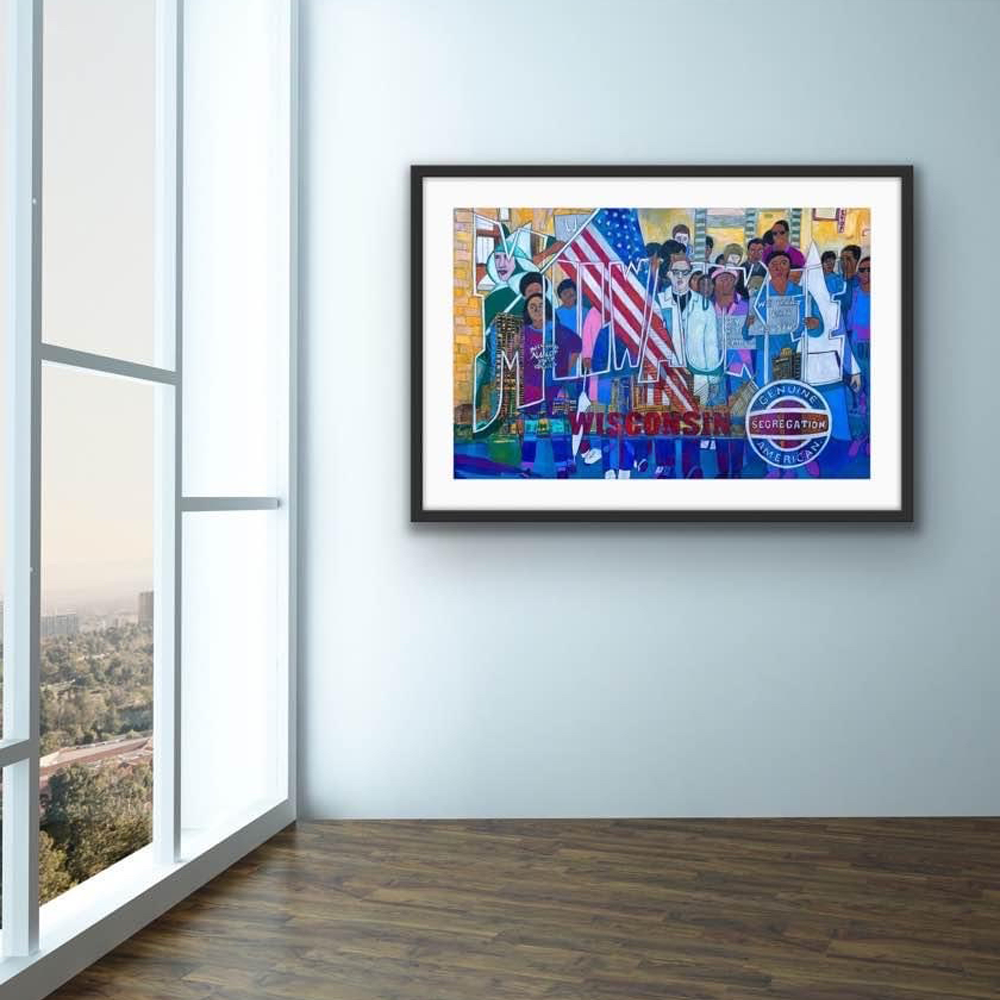Description
This postcard evokes powerful memories of Milwaukee in the 1960s where and when I received my elementary school education. It was a time of significant racial tension and civil rights struggles. During this period, Milwaukee experienced profound social upheaval as African American residents fought against deeply entrenched systems of segregation and discrimination.
Redlining, a discriminatory practice that began in the 1930s, played a crucial role in shaping Milwaukee’s racial landscape:
- Federal housing policies encouraged the use of color-coded maps, with red areas deemed “hazardous” for investment.
- Nearly 100% of Black residents lived in these redlined areas, severely limiting their economic opportunities and ability to build wealth through homeownership.
- Racial restrictive covenants were widely used, with 16 out of 18 Milwaukee suburbs implementing these discriminatory housing policies.
The 1960s saw intense civil rights activism in Milwaukee:
- In 1960, Calvin Sherard organized marches against police brutality and picketing of inner-city stores to demand fair employment practices.
- The Congress of Racial Equality (CORE) led protests against discriminatory public officials.
- Father James Groppi and the NAACP Youth Council Commandoes launched demonstrations for fair housing in 1967.
Tensions reached a boiling point in the summer of 1967:
On July 30, 1967, Milwaukee erupted in violence, lasting four days
Three people, including a police officer, were killed, and hundreds were injured
Mayor Henry W. Maier declared a state of emergency, and the National Guard was deployed.
The events of the 1960s have had a lasting impact on Milwaukee’s social fabric:
- Despite some progress, Milwaukee remains one of the most segregated cities in the United States.
- The 53206 zip code, which is 95% Black, exemplifies the persistent racial divide and faces high incarceration rates.
- Recent studies show that while other cities have made strides in reducing segregation, Milwaukee’s progress has been slower.
Today, Milwaukee’s segregation is a complex issue rooted in historical policies and practices. While overt discrimination is no longer legal, the infrastructure established during the era of explicit segregation continues to shape the city’s racial landscape.





